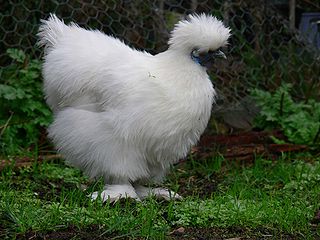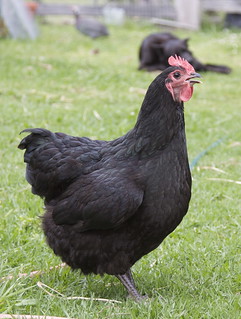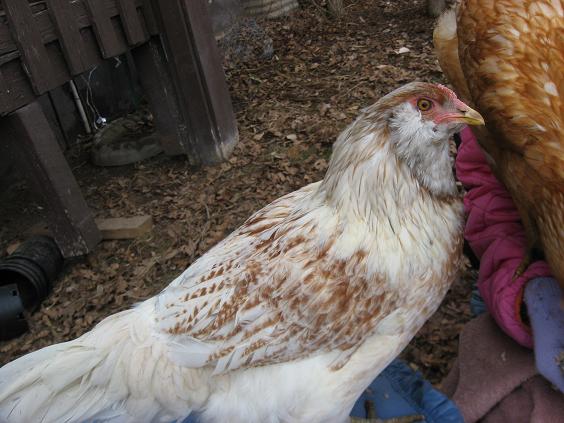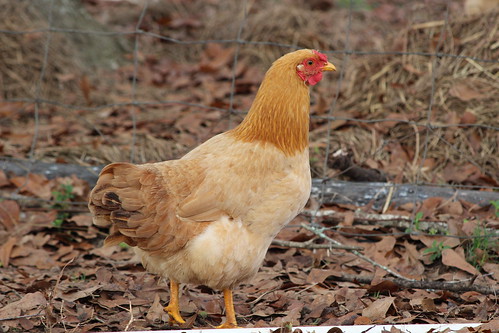I need to figure out what kind of chicken coop to build. Because I live in place with hot summers and cold, snowy winters, I am trying to think things through.
Space per chicken
The conventional answer for how much space is 4 feet per bird inside and 10 feet per bird outside. For my three hens, it would be 12 square feet, so 3 ft x 4 ft. I'll probably expand that to 4 ' x 4' because lumber seems to come in 8' lengths. Also, since it snows here in the winter, the birds will have to spend some days indoors and I don't want them to be too cramped. The run will need to be at least 30 square feet, but if I build an elevated coop like I hope to, I only need an additional 14 square feet of run that isn't under the coop.
Direction
I am planning on the door to the coop facing east. It is very windy where I live. The wind is generally from the north (cold storms) or from the south (warm storms). I would put ventilation holes on the west and east. We occasionally get western storms, but they are less common. I wonder if I could put an awning or something over the ventilation holes to prevent the wind from blowing straight in, or maybe under the eaves of the roof. I also want a nice south facing window to let in the heat in the winter.
Winter
Winter here can be cold. Although I want to use the deep litter method, It would be on a wood floor, so it wouldn't compost. It will only offer insulation, not additional heat. I think if the coop is insulated I will be able to get by just fine. I am considering getting some solar panels to use to run a light or maybe a heated water dish. Probably won't worry about that until I see how the first winter goes. I may also need to put up some plastic or wood along the run to block the wind and snow. Don't know if I'll need to cover it or not.
Ventilation
Chickens produce lots of water vapor and ammonia, so they need
ventilation all year round. I need at least 1 sq ft of ventilation per chicken. I'll also need extra vents for the summer that can be covered over in winter.
Clay
Below the few inches of dirt we trucked in for the lawn is heavy clay. I need to make sure the chicken run doesn't become too muddy.
Coop design
I'm still looking for coop designs. Ideally I would get a kit, but I may need to build my own. I liked
this plan pretty well.
Here's another one from
purina that seems straight forward.
Run design
The run will go under the coop then extend out from it. I am thinking several inches of
road base to let it stay dry. It will need to be covered on top as well to stop hawks (love watching them, but don't want to see one that close up). My yard is sloped and the chicken coop will be down towards the bottom of the slope. I might also have to dig a trench around it and make a french drain, but I'm hoping to avoid that.
Yard Changes
The yard is going to have to change to allow a place that is 4'x 8' for the chickens. I want the run and coop to be in the sun for the winter so that the snow will melt out of the run. This excludes the edges of the yard. The back of my yard tends to get soggy. So I need to find somewhere close to the edge of the yard, but not too close. I also have to accept there will be no grass there :) I also need to talk my husband into adjusting the sprinklers so the run doesn't get wet and start to stink.













